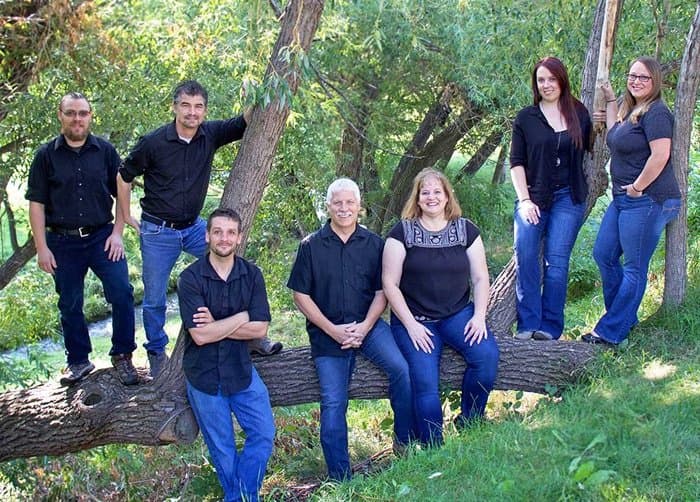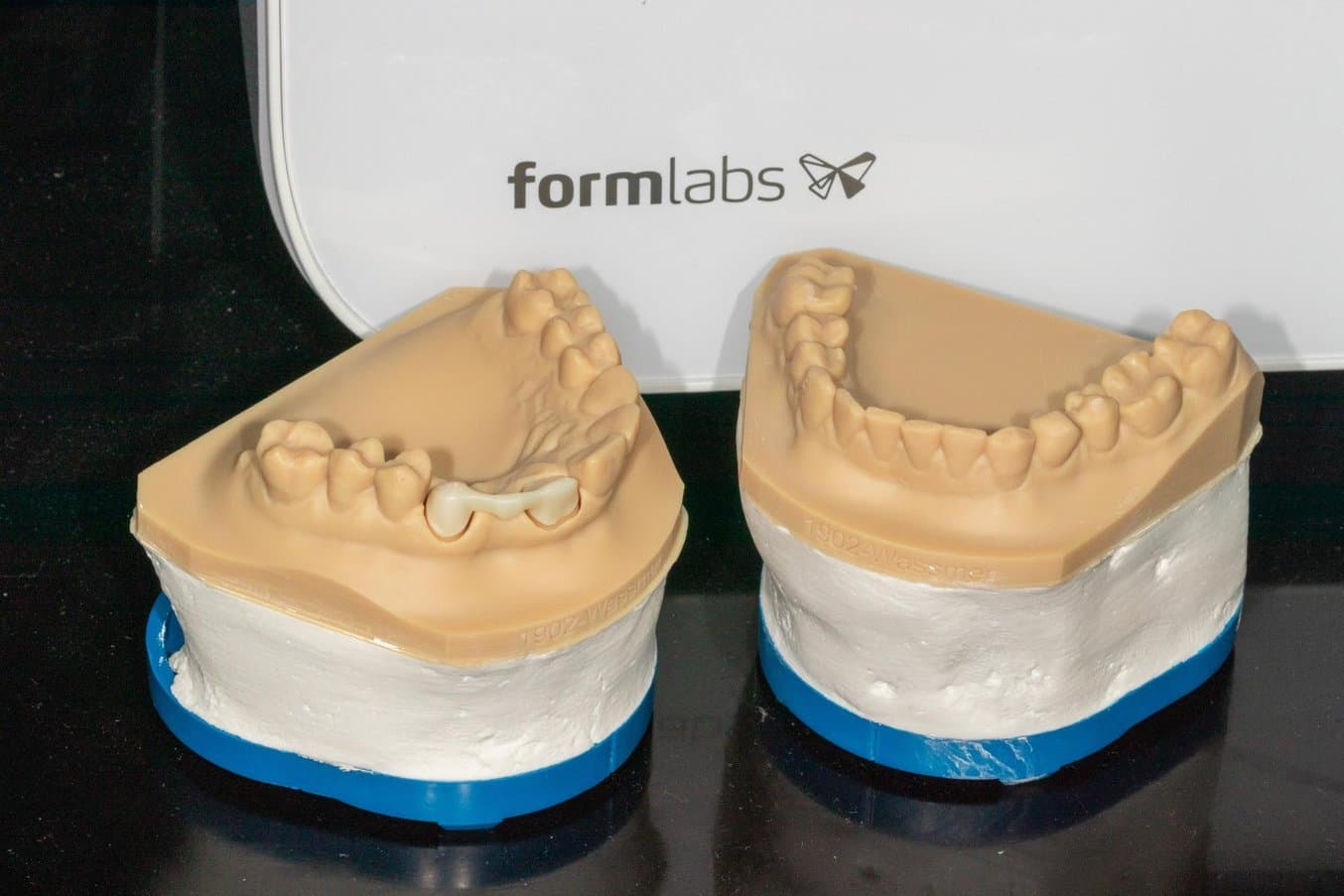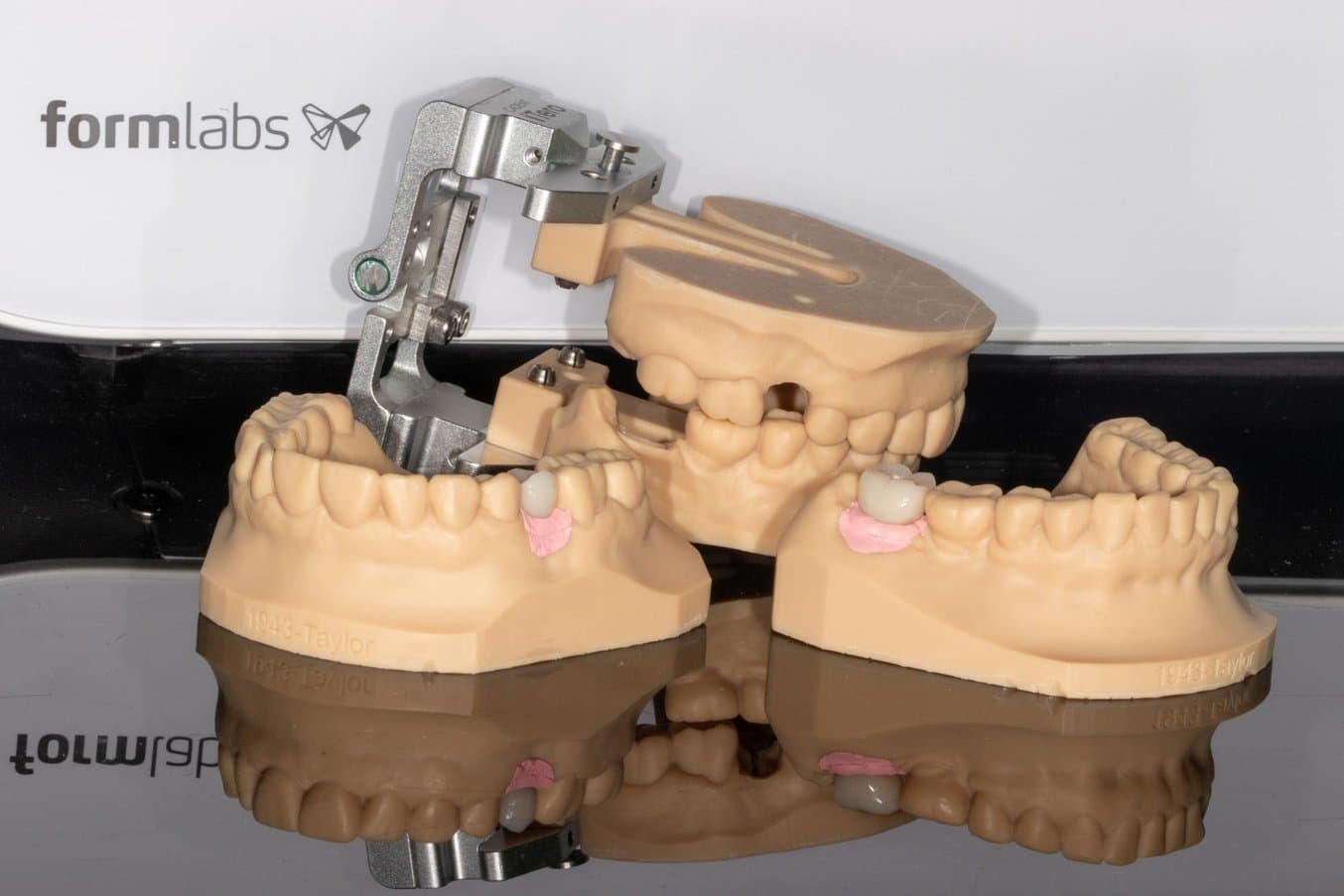Dental Service Plan: Your Partner to Solve Difficulties and Thrive in Digital Dentistry
MCTech Dental Lab, in Billings, Montana, USA is a family-owned dental lab that has been focusing on ceramics for aesthetic and complex restorative cases (including full mouth rehabilitations) for more than 25 years. With extensive experience in the dental field, they have been using milling machines as part of their workflow. Recently, they also expanded their production capabilities with 3D printing to keep up with the latest updates in digital dentistry.
The best way to implement a critical new workflow is to have a team of dental experts standing by to help with training and to lend support if problems arise. To have peace of mind, MCTech purchased a Dental Service Plan (DSP) along with their new Form 3B printer. Behind DSP is a dedicated team of Formlabs agents trained specifically to provide support to dental professionals, including personalized onboarding training, proactive check-ins, and rapid phone and email support.
Read on to learn how MCTech worked with the Formlabs DSP team to resolve consistency issues and get up to speed with the digital workflow, resulting in consistent and accurate modelwork that can match the accuracy of their $60,000 milling machine.
Adopting the Digital Workflow With the Help of the DSP Team
A digital workflow powered by 3D printing has several advantages and differences compared to conventional workflows. It’s important to understand the basis of the technology to obtain good results, identify key opportunities, and have a team that can explain the know-how of the materials and technology.
For a very busy lab with a high production volume, obtaining optimal results and consistency are core to delivering high quality parts.

"I am not an easy customer. I demand a lot from any company I work with and my expectations are high. The standard our small lab holds itself to comes from 25 years of surviving on sheer reputation. When I got my Form 3B, I set the Formlabs dental team a task to help me get consistent highly accurate prints to adapt our restorations to. This team helped me to shorten my learning curve to attain the level of expertise I required. I did not assume that 3D printed models could even beat out what could be produced without modelwork at all. I've read plenty of studies and articles but I had to know for myself,” said Ryan McKee, the lab manager and marketer at MCTech.
Formlabs Dental conducts extensive internal testing and validation to guarantee that users get the results they expect. When McKee and his team started to face consistency issues while establishing a new 3D printing model production workflow, the DSP team jumped to help solve their challenges.
The DSP team escalated MCTech’s case to our testing team, who printed several test prints of their files to troubleshoot the issues and help tune in the right settings for the entire workflow, from digital design to printing and post-processing. The team also shared a new extensive guide for restorative models.
"You were on call to troubleshoot at the drop of a hat, and I was able to talk with your experts from as far as Germany. I just want to say thank you,” said McKee.

“I am glad I went with your company. My research before deciding on Formlabs involved not just the technology; I wanted a tenacious and driven partner. I know several labs that do not do this kind of due diligence with their 3D printer. I had a high standard and was several times very close to abandoning 3D printed modelwork altogether. But you and your company never gave up on me, never wrote off my very demanding standards, and your new dental division has been extremely knowledgeable and yet open to input,” said McKee.
The Advantages of the Digital Workflow
“There are certain advantages of doing [models] digitally that I wasn’t thinking about open-mindedly; I was boxed in on traditional model work. Traditional model work consists of having models with removable dies with pins and that is the model that you articulate. So if you think about it, there are a lot of flaws and variables that are inherent such as slight movement of the pins. Especially when doing multiple units, a second solid model has always also had to be poured up to adapt proximal contacts.” said McKee.
“What is superior about 3D printed models is that you can 3D print out separate dies which we can wax or fit the crown down to and confirm a sealed margin first. We at the same printed a solid model the margins ditched out in our CAD software. This ditching is precise, leaves more information about the tissue and you can articulate one model that provides what you need to make all adjustments both proximal and occlusal. There is no technique out there for doing this kind of ditching with stone models, and it provides a superior result,” said McKee.

The Result: Consistent, Accurate Modelwork
“I am finally getting a high quality print, consistently and reliably. I’m confident that this modelwork substantially improves the quality of the restorations we make. The margins have become so accurate that we discovered our Amann Girrbach mill needed maintenance, calibration, and tweaked a few milling settings. Our stone modelwork couldn't even catch this. So, our $3,500 printer was catching mistakes in the microns made by our $60,000 milling machine,”
“Working closely with my doctors, I attended several seatings and constructed blind tests with three versions of our crown, one adapted to traditional analog modelwork, one unadapted to any modelwork (model-less), and one adapted to 3D modelwork printed from our Formlabs Form 3B. The conclusion of these rigorous steps is that I can confidently confirm that adapting our crowns to this modelwork saves the doctor chair-time and results in superior fit to the margin and proximals as compared to modeless restorations. Quality in my industry operates within a margin of error in the microns. Formlabs 3D printers, and more importantly their dental team have shown me they are up to the task of meeting the dental industries high demands,” said McKee.
Learn more about the benefits of Dental Service Plan (DSP) and hone your 3D printing skills with our library of in-depth guides, step-by-step tutorials, white papers, webinars, and more.